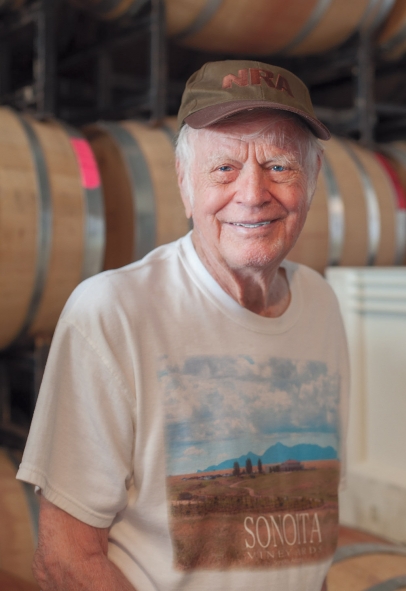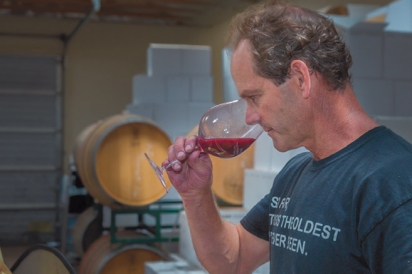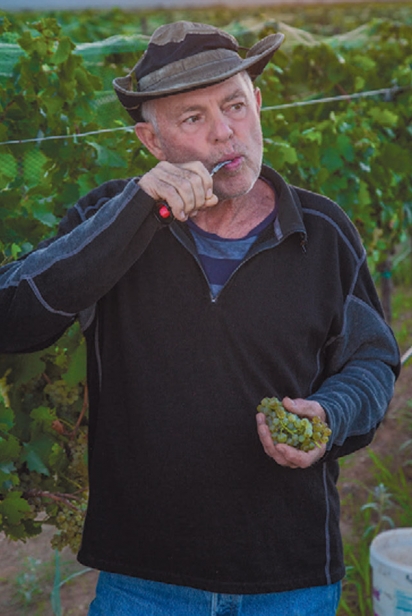Remembering Gordon Dutt, The Father of Arizona Winemaking
WHEN DR. GORDON DUTT first proposed the idea of growing grapes and making wine in Arizona, he was met with derision by almost everyone, from farmers and his fellow academics to wine distributors and retailers. But the hard-headed Dutt, a soil scientist at the University of Arizona who had come from the University of California at Davis, persisted.
The idea wasn’t totally farfetched—the Spaniards had brought grapes and winemaking to the region 300 years before and those practices lasted in some form until Prohibition—but Dutt believed small wineries could thrive in the high deserts of the Southwest. He collaborated on a research project in the 1970s, and when the report—known as The Four Corners Report—was released in 1980, it became the handbook for aspiring growers and winemakers in the region.
Dutt, who passed away in September at his Tucson home at the age of 91, became a formidable force. Not only did he, with his partners, plant the first commercial vineyard (1974) and build the first commercial winery (1983) in Arizona (Sonoita Vineyards, still in business today and run by his granddaughter, Lori Reynolds), he contributed to the fledgling industry in myriad ways large and small. He was one of the original members of the Arizona Wine Growers Association, he helped Sonoita become Arizona’s first approved American Viticultural Area and was instrumental in getting legislation passed at the state level to allow farm wineries to have tasting rooms and ship their products directly to customers without having to deal with distributors.
Kris Pothier of Chateau Tumbleweed in Clarkdale is the current president of AWGA. Chateau Tumbleweed—founded by Pothier, her husband and another couple in 2011—is one of the next-generation wineries building upon the success of early pioneers like Dutt. Pothier never had the opportunity to meet Dutt but says, “From all that I have seen and heard, Gordon had a kind and generous heart. He was selfless with his wine knowledge, passing along what he knew and offering a hand to many. We all benefit when a brave and kind human leads the way.”
Kent Callaghan of Callaghan Vineyards, who first met Dutt in the late ‘80s, credits him with not only beginning the wine industry in Arizona, but also with steering its growth into making Arizona a respected wine region.
“There are a few people not truly really focused on quality, to be honest. There were people like that back then, too,” he says. “And there was a real tipping point where we thought it looked like it could go the other way and turn into some kind of a touristy joke. But really, it’s about being grounded in the soil, actually growing the right thing. And Gordon really fought hard for that the entire time he was active in the industry, which was probably the first 20 years that I knew him. He was a big driving force, obviously, not only in starting the whole industry, but in keeping it going and, in my opinion anyway, headed in the right direction.”
Callaghan credits Dutt with being not only a visionary but also a fine craftsman when it came to winemaking. “Gordon’s Chenin Blanc was completely dry, bone dry, and actually aged exceptionally well. I remember my dad and I popping a bottle of the ‘84 one afternoon at home, and Gordon happened to stop by about 20 minutes later, just happenstance. It was probably one of the best white wines I’ve ever had from Arizona. And I think this was probably in ‘91 or ‘92.”
Callaghan Vineyards got its start in 1990 in the former winery at Sonoita Vineyards. “I understand why they moved out after a year because it was it was pretty small. But it was just totally secluded and kind of a cool spot to make wine in the early days. It was like a little incubator winery for us to get started,” says Callaghan. They produced 10 vintages before moving into their own larger winery in 2001.
Dutt could be stubborn and volatile, but Callaghan says those traits were the driving force behind his success building an industry from scratch, especially one that most people thought to be a fool’s errand. “He was not an easy guy to work with,” says Callaghan, “but I never had any problems with him. But I know there were a lot of people who did. At some point, obviously, that can become a problem, but for that time period, it probably was exceptionally valuable.”
Even though he could be difficult, Dutt also had a sense of humor, says Callaghan. “About the only thing I ever saw him wearing was a T-shirt that said, ‘I spent all my money on wine and women. The rest I just wasted.’”
Sam Pillsbury had always planned on growing grapes and making wine on Waiheke Island in his home country of New Zealand, but his career in the movie business kept him in Southern California for long periods of time. His wife is from Arizona, and on one road trip with his son in about 1999, Pillsbury drove through Southern Arizona.
“I remember driving down that road when you go off I-10 to go to Sonoita and Elgin, and it kind of winds through these hills. As we approached Sonoita there was a big sign on the right-hand side of the road that said ‘You are entering wine country’ and I got goosebumps over my whole body. The whole idea of wine country in Arizona was so counterintuitive, and it appealed to me immensely,” he says. “Gordon Dutt was the reason, in the end, that I came to southeastern Arizona to look for land. I’m always full of admiration and respect for anyone who’s a pioneer, and he was the first.”
Pillsbury admires Dutt for his understanding that Southern Arizona has some of the best conditions for growing grapes in the world. The elevation, the coolness of the nights, the sunny days, and the amount of ultraviolet light all combine to produce exceptional fruit.
“I have to say thanks to Gordon Dutt for ringing my bell,” he says. “I met him a number of times when he was deaf as a post and would speak at a very high volume and refused to wear hearing aids, just like my 89-year-old mother-in-law. But you gotta hand it to that bastard.”
Even though Dutt retired from the wine business several years ago, his passing leaves a hole to be filled. But Callaghan believes the next generation is doing a good job of carrying on Dutt’s legacy.
“The nice thing is that we have more than one,” he says. He cites Todd Bostock at Dos Cabezas Wine Works for his legislative efforts as well as his skill as a winemaker; winemaker Michael Pierce of Bodega Pierce and director of viticulture and enology at the Southwest Wine Center at Yavapai Community College; Kris Pothier of Chateau Tumbleweed and AGWA; and up-and-coming winemaker Brooke Ide of Vino Stache Winery in Elgin, among others.
The Arizona wine industry has grown quickly over the past few years as winemakers from other regions in California are attracted to the relatively low cost of land and the favorable growing conditions, and Callaghan and Pothier expect that growth to continue, but there are challenges. Hail has pounded the Sonoita AVA periodically, and in a changing climate, that may be a harbinger of things to come. And then there’s the issue with water in the Willcox AVA, which has become home to not only vineyards, but water-intensive fruit and nut crops and a massive, groundwater-sucking dairy operation. But those who carry on in Gordon Dutt’s footsteps are also a stubborn and resilient group, and with any luck, his spirit of perseverance in the face of difficulties will continue to guide them.








